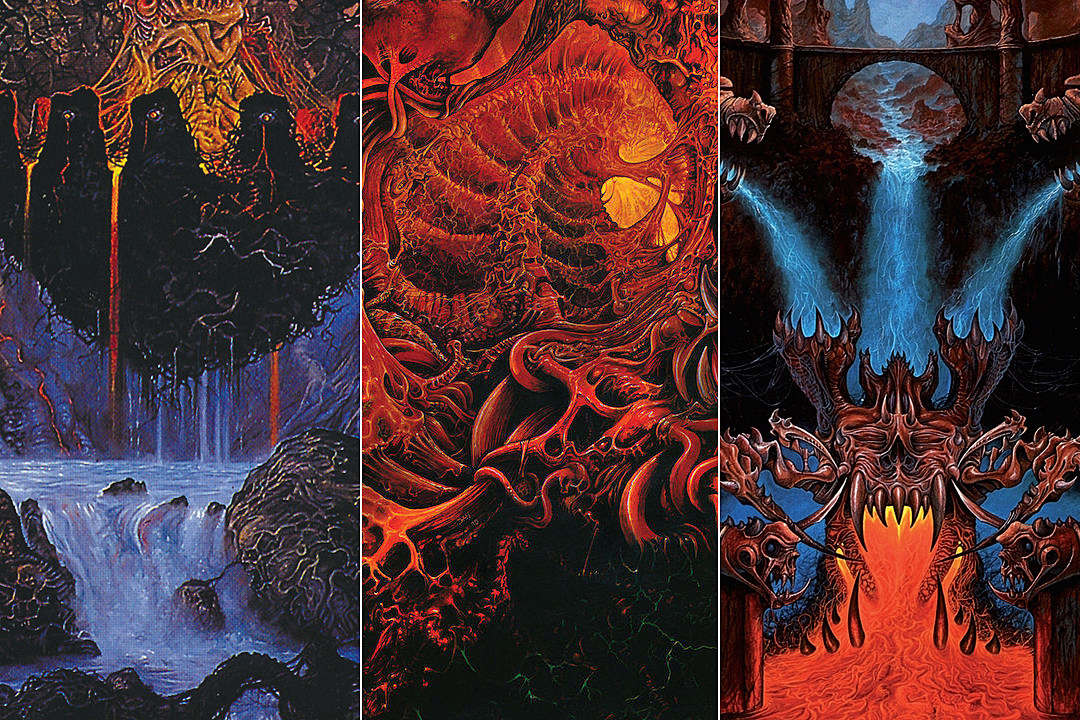From Roots to Revelation
“The Jester Race” and
“The Gallery” didn't just refine Melodic Death Metal, they transformed it into
timeless art.
In Metal history, it’s rare for a band's second album to be the one that defines a genre. But in the mid-1990s, deep in the industrial heart of Gothenburg, Sweden, In Flames and Dark Tranquillity each released sophomore records that did just that. Their first efforts “Lunar Strain” (1994) and “Skydancer” (1993), showed promise, but they were raw, searching, and unpolished. Then came the second wave: In Flames’ “The Jester Race” (1996) and Dark Tranquillity’s “The Gallery” (1995). Albums that weren’t just evolutions of sound, but manifestos. These were the records that solidified Melodic Death Metal as something distinct, artistic, and emotionally resonant. And almost 30 years later, they remain untouchable classics, not simply as genre landmarks, but as enduring statements of beauty, power, and despair.
“The Jester Race” (Nuclear Blast, 1996)
With “The Jester Race”, In Flames emerged fully formed, more focused, more melodic, and more philosophical than ever before. The album is Melodic Death Metal at its most luminous: an alchemical balance of iron-fisted aggression and folk-like sorrow. The twin guitars of Jesper Strömblad and Glenn Ljungström are the album's glowing core, weaving harmonized leads and acoustic passages that echo Iron Maiden as much as At the Gates. Songs like “Moonshield”, “Artifacts of the Black Rain”, and “December Flower”, showcase a band with a clear identity, one that fuses Scandinavian melancholy with philosophical introspection and melodic flair.
And then there’s Anders Fridén, whose performance gives the album its emotional anchor. Gone are the throat-shredding shrieks of “Lunar Strain”. In their place is a controlled, raspy growl, urgent but sorrowful. His lyrics drift into symbolic terrain: jesters, kings, empires, and existential fatigue. “I’m the unbalanced scale / The rope around your neck,” he intones in “Dead Eternity,” casting himself as the conscience of a decaying world.
The record’s production, handled by Fredrik Nordström at Studio Fredman, captures clarity without polish. The riffs are sharp, the acoustics crisp, the blastbeats defined. It was a sound many bands would chase, but few would equal. At just under 40 minutes, “The Jester Race” doesn’t overstay its welcome. It presents its vision with elegance and discipline, a Melodic Death Metal symphony compressed into a storm of vivid images and unforgettable riffs.
“The Gallery” (Osmose Productions, 1995)
Released several months earlier than “The Jester Race”, Dark Tranquillity’s “The Gallery” is its shadowy counterpart. Where In Flames offers light, “The Gallery” is filled with dusk and echoes. It’s more introspective, experimental, and emotionally volatile, a work of gothic grandeur shaped by sorrow and existential doubt. The album opens with “Punish My Heaven”, a furious burst of melodic riffing, shifting rhythms, and Mikael Stanne’s passionate growl. From the very first note, it’s clear: this is not a typical Death Metal record. “The Gallery” is theatrical, not in a superficial way, but in the sense that every track is part of a broader emotional arc.
Tracks like “Lethe”, “Edenspring”, and the title track, “The Gallery”, demonstrate remarkable dynamic range, acoustic interludes bleeding into shredding riffs, complex tempo shifts that evoke classical symphonies, and lyrics steeped in poetic melancholy. The guitar duo of Niklas Sundin and Fredrik Johansson crafts ornate melodic frameworks while drummer Anders Jivarp keeps the chaos on a tight leash. Mikael Stanne’s vocals are *haunted and human. Unlike the impersonal roars of many contemporaries, his voice carries the weight of grief, introspection, and quiet rage. He doesn’t just growl, he narrates, he pleads, he remembers.
“The Gallery” is a near-seven-minute journey through regret and remembrance, a tragic ballad cloaked in thunder. It’s one of the most stunning tracks in the melodic Death canon. Where “The Jester Race” presents a philosophical dreamscape, “The Gallery” builds a cathedral of pain, brick by brick, note by note.
Two Visions, One Revolution
Together, “The Jester Race” and “The Gallery” represent the dual souls of Gothenburg. In Flames leaned into clarity, melody, and narrative structure. Their music was tight, anthemic, and philosophical, Metal you could feel and remember. Dark Tranquillity embraced complexity, mood, and classical structures. Their music was immersive, unpredictable, and deeply emotional, Metal you could get lost in. Despite these differences, both bands shared key elements.
Twin harmonized guitars inspired by NWOBHM and neoclassical music.
Acoustic interludes and atmospheric layering.
Emotional lyricism that broke with Death Metal tradition.
Relentless dedication to craft over trend.
They weren’t trying to please the mainstream. They were building a new tradition, from the ashes of Death Metal orthodoxy.
Influence & Aftershock
It’s difficult to overstate the influence of these albums. Together, they helped spawn entire waves of melodic Death and Metalcore. Bands across the globe – Soilwork, Killswitch Engage, Omnium Gatherum, Insomnium, Heaven Shall Burn, and countless others – owe much to the blueprint laid down here. And yet, these two records have never been eclipsed. Why? Because they emerged from a moment of purity, when the Gothenburg scene was still personal, still insular. No commercial pressure. No algorithms. Just raw feeling channelled through six strings and distortion.
Final Reflection
If “Lunar Strain” and “Skydancer”
were origin stories, then “The Jester Race” and “The Gallery” were
canonizations. They are the moment when Melodic Death Metal became self-aware,
began to speak in metaphors, and realized it could be beautiful without
becoming weak. Even now, nearly three decades on, these albums stand outside of
time. They are cathedrals built in distortion. They are hymns of fire and
grief. They are the sound of artists discovering themselves, and, in the
process, giving birth to something eternal.



Comentários
Enviar um comentário